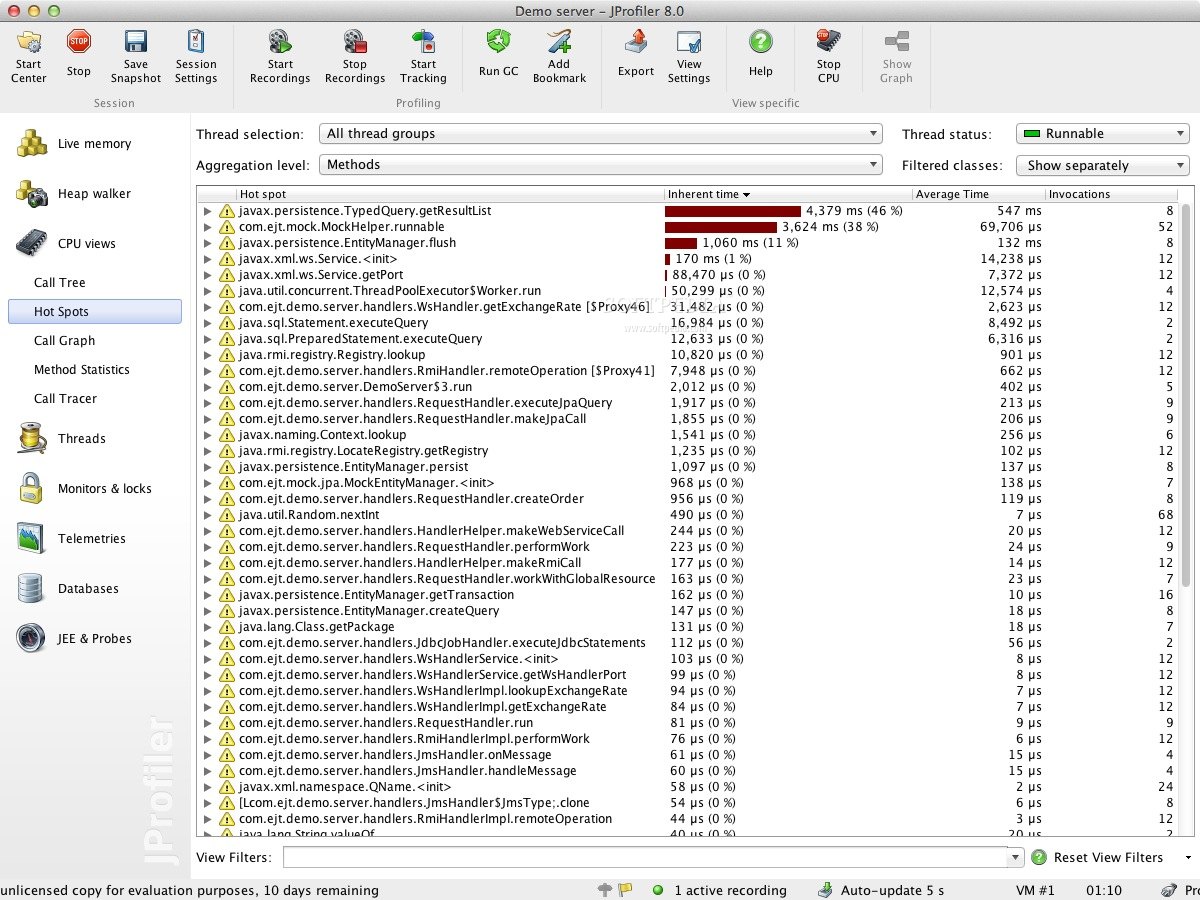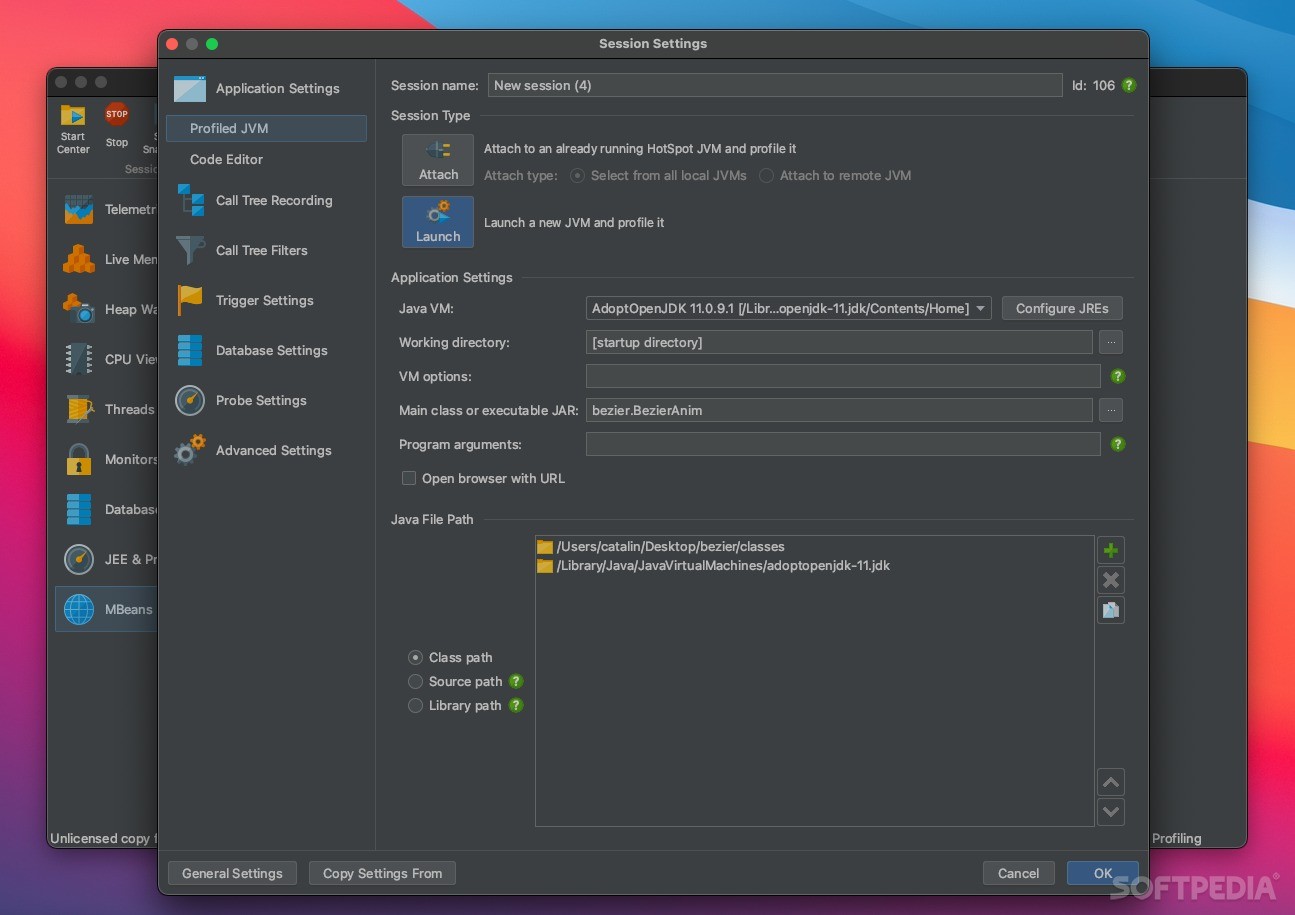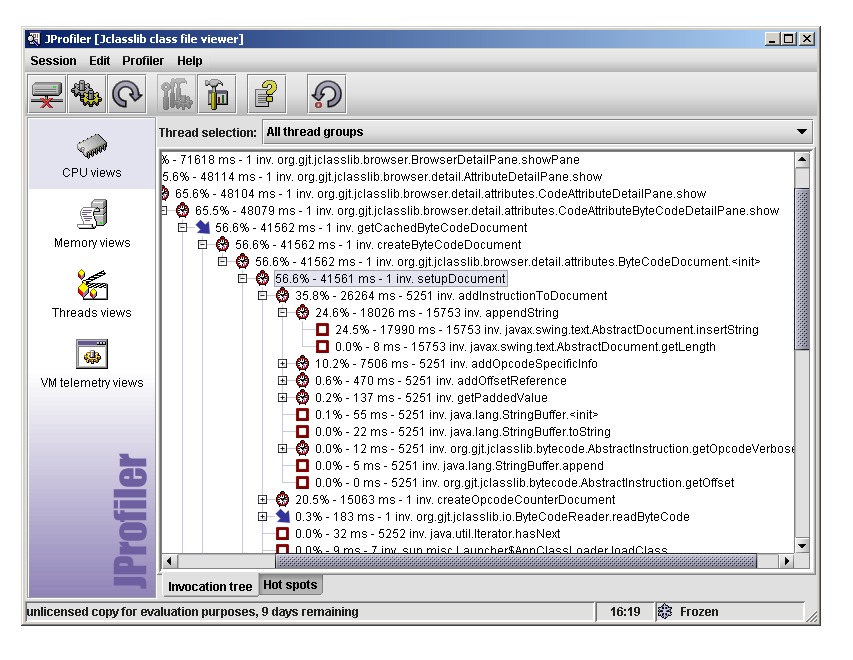



JPROFILER DETACHED SOFTWARE
JProfiler works both as a stand-alone application and as a plug-in for the Eclipse software development environment. List allEntities = serviceC. JProfiler is a Java profiler tool and is useful for developers/testers as it can be used to analyze performance bottlenecks, memory leaks, CPU loads, and to resolve threading issues. Seems to me the object which is used by the second transaction(s) "belong" to the first one even though the first transaction was supposed to finish? Maybe its a race condition? ServiceA ServiceB ServiceC serviceC However, this fails inside the loop with "No session" even though I have an active transaction inside the method (TransactionSynchronizationManager.isActualTransactionActive is true). And a new transaction for each new item.I have three classes like below, with an entity (called MyEntity) which also has another entity connected via Hibernate mapping called "OtherEntity" which has lazy loading set to true. For the sake of this example, we generate the Model objects that contain the Attributes ourselves.I have a problem with accessing data inside a running transaction when the data came from another (supposedly closed) transaction. In our example, we want to load all Attributes of different Models of some kind. In Filter Settings, you can select the option Edit and it will launch another window where. To get an idea of how a real memory leak looks like, we create an example on the basis of the Baeldung memory leak article. If you are running the application locally, JProfiler will launch and will ask user to find the directory where JProfiler.exe is located, once you click OK, it will start the application server (from intelliJ RUN configuration). So, if we did not wait long enough for the garbage collector to run, we could come to the false conclusion that a memory leak occurred. Only at the end of the startup period we can see a spike in the garbage collector graph and a dramatic decrease in used memory. But if we look at the GC Activity graph during the startup period the memory increases, we observe that the garbage collector did not run (activity at 0%). Depending on the options we select, when starting the profiling session, it shows us the memory, garbage collector activity, recorded throughput, CPU load and many more.įor example, this is the memory graph for the startup of a service.įor someone who has never dealt with a memory leak, looking at this graph, he might think that a memory leak occurred as the memory usage is increasing continuously. JProfiler displays several graphs after it has started up. We will take a look at a memory leak and investigate how it would be possible to detect using the tools that JProfiler offers. There are many blog posts and articles about different kind of memory leaks and how their memory footprint looks like, unfortunately, it is very hard to find the memory leak based only on the memory graph. It seems yourkit just gives sampling information which is not accurate unless you are measuring thousands of invocations. JProfiler brings many more features, like database profiling but these are out of the scope of this blog post. JProfiler shows more accurate and concise information for performance analysis with the exact number of method invocations and percent time spent in each method. It provides many useful tools such as memory profiling, a way to analyze heap snapshots and a live memory view that shows all objects that are currently in use. JProfiler is a java profiler developed by ej-technologies that helps developers resolve performance bottlenecks, find memory leaks and understand threading issues.


 0 kommentar(er)
0 kommentar(er)
